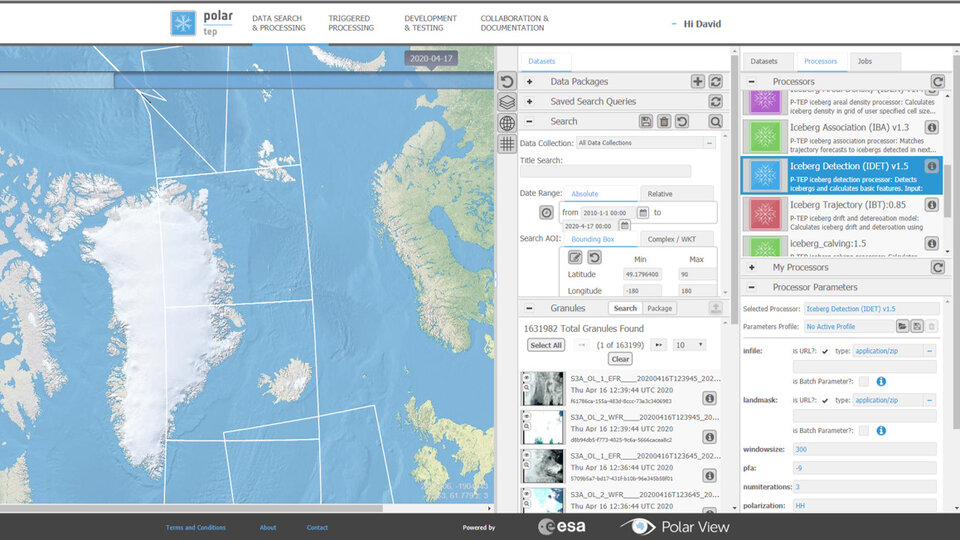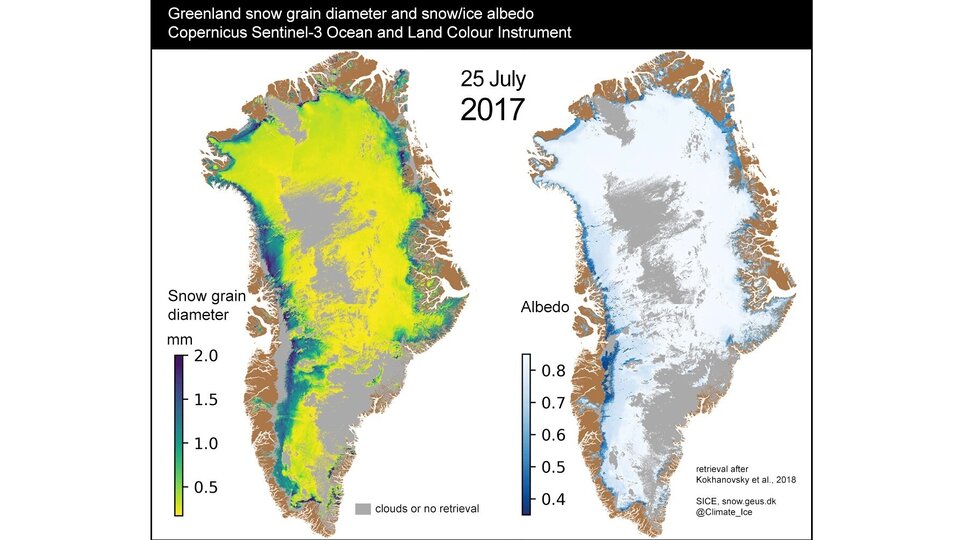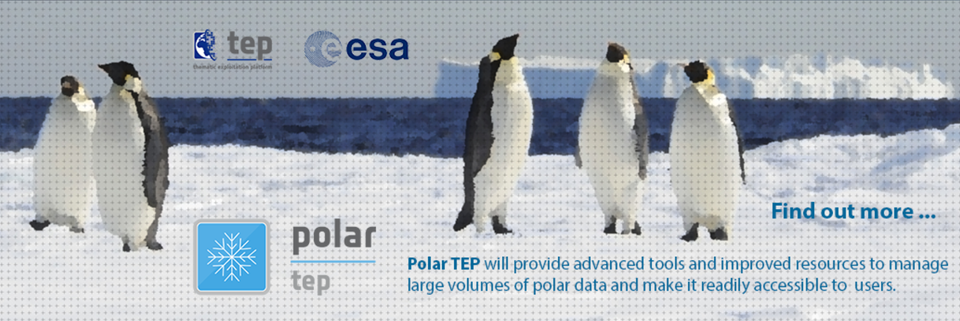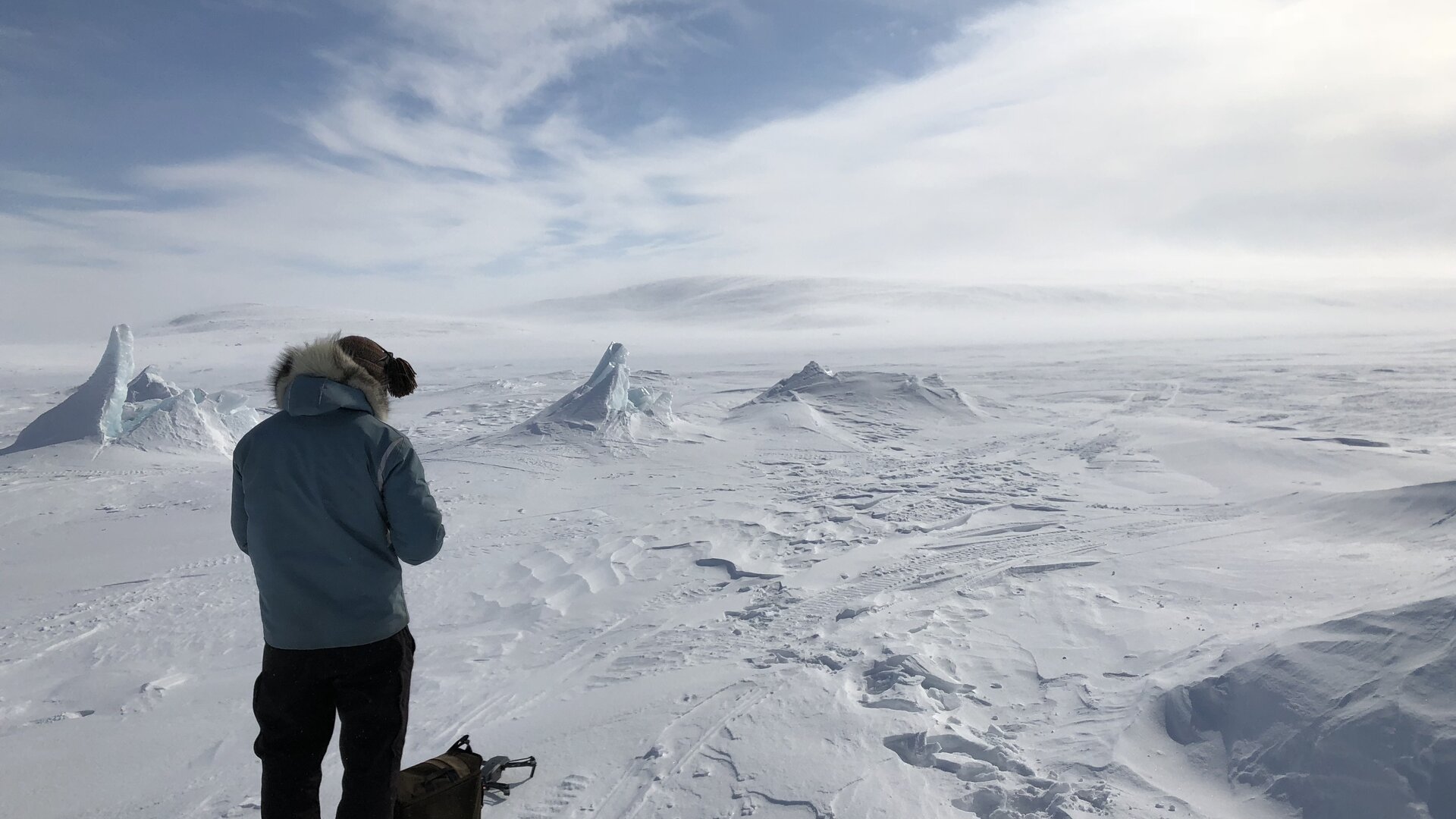A platform to protect Earth's poles
The poles play a huge part in regulating and driving the global climate, but they are also the regions experiencing the fastest rates of warming worldwide. Additionally, being sparsely populated but rich in natural resources is making their development increasingly interesting to politicians and industry. Developing tools to understand and monitor any environmental changes is vital to better predict and reduce the resulting global economic and environmental consequences.
As climate change progresses, environmental data covering the Arctic and Antarctic become ever more important. In these remote, harsh and often dark regions, it is very difficult to collect data from the ground. Instead, satellites provide the most consistent, repeatable, year-round and wide-coverage information. This, combined with the polar regions covering a third of Earth's surface, makes polar researchers the biggest user group of Earth observation satellite data.
To support researchers, industry, local indigenous populations and regional and national governments, in 2015 ESA asked global organisation Polar View to develop a Thematic Exploitation Platform that would make data, tools and resources relevant to the polar regions available in one place.

"Previously those interested in accessing information about the polar regions often spent at least half of their time and resources looking for data in different places and finding it in different formats," explains ESA scientist Ola Gråbak who oversees the development of the platform.
"They then had to download the data and figure out how to process it using their available software and computing resources."
With the increasing volume of data arriving from satellites such as the Copernicus Sentinels, this process didn’t make the most of the plethora of data available for the polar regions.


Access the video
"The platform we have created is an online environment where anyone, anywhere, can access data, analytic tools, and high-performance processors to analyse the data," adds David Arthurs, Managing Director of Polar View.
"This is encouraging wider use and application of Earth observation data, including by younger researchers and smaller research institutions that lack the resources for large computations."
When the platform was launched in 2018, a pilot project demonstrated how it could be used to investigate the iceberg risk in Baffin Bay off the west coast of Greenland. The results are now supporting climate change studies, infrastructure design and ship routing decisions.

The platform is now used by people around the world in their own polar-related projects and is constantly evolving to meet their needs. One such user is the Geological Survey of Denmark and Greenland (GEUS), who are using data from the Copernicus Sentinel-3 satellite to generate information related to the grain size and amount of sunlight reflected by snow in Greenland. This is important because the dominant energy source driving the melting of the Greenland ice sheet is the amount of absorbed sunlight.
"The platform has always contained satellite data from space agencies around the world, but we are now working on a project to bring in other types of information, such as in situ environmental data and socio-economic data," concludes David. "This will make the platform even more useful for a wide range of purposes."

The platform is one of seven Thematic Exploitation Platforms (TEPs) conceived by ESA to share data, infrastructure, tools, algorithms and knowledge. To find out more about the TEPs, click here.
On 28–30 October 2020, an Earth observation for polar science workshop will take place in Copenhagen, organised jointly by ESA and the European Commission. The workshop will address the latest advancements in using Earth observation technology for polar science, explore the main challenges and opportunities for the coming decade and contribute to defining a scientific agenda for the future.


